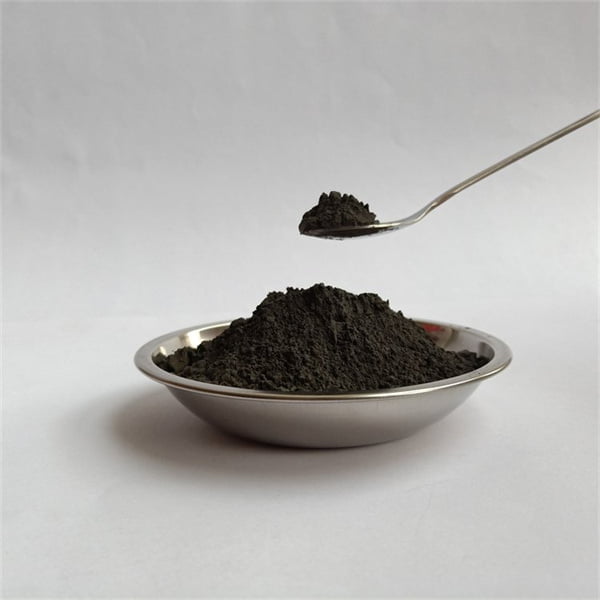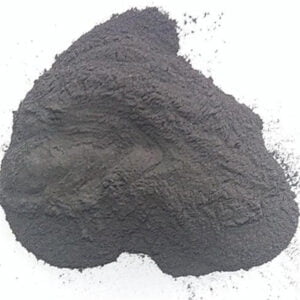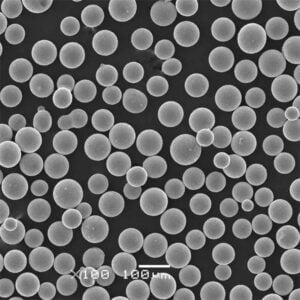CVD Platinum Powder: Manufacturing Catalysts
Table of Contents
Have you ever wondered how the gasoline in your car gets transformed into cleaner emissions, or how sustainable fuel cells generate electricity? The answer lies in a remarkable material called CVD platinum powder. This microscopic marvel plays a crucial role in numerous catalytic processes, driving innovations across diverse industries.
But what exactly is CVD platinum powder, and how does it work its magic? Buckle up, because we’re about to delve into the fascinating world of nanotechnology and explore the exciting applications of this powerful material.
The Advantages of CVD Platinum Powder
CVD (Chemical Vapor Deposition) platinum powder boasts several advantages over traditional catalyst materials:
- High surface area: Its incredibly small particles, measured in nanometers, offer a vast surface area, maximizing the number of reaction sites for efficient catalysis. Imagine having a microscopic sponge with countless nooks and crannies – that’s the essence of CVD platinum powder’s effectiveness.
- Exceptional catalytic activity: Platinum possesses inherent catalytic properties, meaning it can accelerate chemical reactions without being consumed itself. The high surface area of CVD platinum powder further amplifies this effect, leading to faster and more efficient reactions.
- Tailorable properties: The size, shape, and morphology of the particles can be precisely controlled during the CVD process. This allows scientists to “customize” the powder for specific applications, optimizing its performance for various reactions.
- Durability and stability: Unlike some other catalysts, CVD platinum powder exhibits excellent resistance to high temperatures, harsh chemicals, and deactivation (loss of catalytic activity). This translates to longer catalyst lifetimes and improved cost-effectiveness.

CVD Platinum Powder: Unveiling the Manufacturing Process
The creation of CVD platinum powder involves meticulously controlled chemical reactions within a specialized chamber. Here’s a simplified breakdown of the process:
- Precursors and substrates: Gaseous precursors containing platinum are introduced alongside a substrate material, often alumina, silica, or carbon.
- Chemical reaction: At elevated temperatures, the precursors decompose, releasing platinum atoms that deposit onto the substrate surface.
- Nucleation and growth: As the deposition continues, individual platinum atoms clump together, forming tiny clusters and eventually growing into the desired nanoparticle size and morphology.
- Purification and finishing: The resulting powder undergoes rigorous purification to remove impurities and achieve the required level of homogeneity and consistency.
CVD Platinum Powder Applications
CVD platinum powder’s versatility shines through its extensive applications across various industries:
1. CVD Platinum Powder: Alumina Catalyst for Automotive Emission Control
Imagine a tiny warrior battling harmful pollutants within your car’s exhaust system. That’s precisely what CVD platinum powder does when deposited onto an alumina support. In three-way catalytic converters, this potent duo significantly reduces nitrogen oxides (NOx), hydrocarbons (HCs), and carbon monoxide (CO) emissions, contributing to cleaner air and a healthier environment.
2. CVD Platinum Powder: Carbon Black Catalyst for Fuel Cells
Fuel cells, the clean energy champions, rely on catalysts to accelerate the electrochemical reactions that generate electricity. CVD platinum powder, often dispersed on carbon black support, plays a critical role in converting hydrogen and oxygen into water, releasing electricity during the process. This technology holds immense potential for powering electric vehicles and creating a sustainable future.
3. CVD Platinum Powder: Cerium Oxide Catalyst for Petrochemical Industry
The petrochemical industry, responsible for creating numerous everyday products, also generates environmental concerns. Enter CVD platinum powder supported on cerium oxide. This combination acts as a powerful catalyst in hydrocracking, a process that breaks down heavy oils into lighter, more valuable fuels, contributing to improved resource utilization and reduced environmental impact.
4. CVD Platinum Powder: Silicon Dioxide Catalyst for Pharmaceutical Production
The world of medicine relies heavily on precise chemical reactions to produce life-saving drugs. CVD platinum powder, in its silicon dioxide-supported form, finds application in hydrogenation reactions, which are crucial for transforming organic molecules into their desired form. This allows for the creation of various pharmaceuticals with enhanced efficacy and safety.
5. CVD Platinum Powder: Beyond the Examples
These are just a few examples of CVD platinum powder’s diverse applications. Its potential extends further, including:
- Refineries: Upgrading low-quality crude oil into more valuable products.
- Food industry: Hydrogenating vegetable oils to improve their stability and shelf life.
- Chemical synthesis: Creating a wide range of chemicals used in various industries.
the Landscape of CVD Platinum Powder Models
With the growing demand for CVD platinum powder, various models have emerged, each catering to specific needs and applications. Here’s a closer look at ten prominent models:
| Model | Support Material | Particle Size (nm) | Application Focus |
|---|---|---|---|
| Pt/Al2O3 (Engelhard) | Alumina | 2-5 | Automotive emission control |
| Pt/C (Alfa Aesar) | Carbon black | 2-10 | Fuel cells, hydrogenation reactions |
| Pt/CeO2 (Strem Chemicals) | Cerium oxide | 3-8 | Hydrocracking, reforming reactions |
| Pt/SiO2 (Sigma-Aldrich) | Silicon dioxide | 3-7 | Pharmaceutical production, fine chemical synthesis |
| Pt/TiO2 (Nanophase) | Titanium dioxide | 5-15 | Dehydrogenation reactions, environmental remediation |
| Pt-Sn/Al2O3 (BASF) | Alumina (doped with tin) | 2-4 | Reforming reactions for high-octane gasoline production |
| Pt-Ru/Al2O3 (Umicore) | Alumina (doped with ruthenium) | 3-6 | Ammonia synthesis, hydrogen production |
| Pt-Rh/Al2O3 (Johnson Matthey) | Alumina (doped with rhodium) | 1-3 | NO reduction in automotive exhaust, hydrogenation reactions |
| Pt-Pd/Al2O3 (Wako Chemicals) | Alumina (doped with palladium) | 2-5 | Hydrogenation reactions, selective hydrogenation |
| Pt-Ir/Al2O3 (American Elements) | Alumina (doped with iridium) | 3-8 | Hydrogenation of heavy oils, hydrocracking |
Comparing and Contrasting CVD Platinum Powder Models
Choosing the right CVD platinum powder model requires careful consideration of various factors:
- Support material: Different support materials offer unique advantages. Alumina is widely used due to its thermal stability and cost-effectiveness, while carbon black excels in fuel cell applications due to its high electrical conductivity.
- Particle size: Smaller particles typically provide higher surface area, enhancing catalytic activity, but may be less resistant to aggregation (clumping) over time. Conversely, larger particles offer better stability but might exhibit lower catalytic efficiency.
- Doping: Introducing other metals (like Sn, Ru, Rh, Pd, or Ir) alongside platinum can modify the catalyst’s properties, tailoring it for specific reaction requirements. For instance, Pt-Sn/Al2O3 exhibits improved activity in reforming reactions compared to pure Pt/Al2O3.
Additional Considerations When Selecting a CVD Platinum Powder Model
- Purity: The level of platinum purity directly impacts the catalyst’s performance and cost. High purity grades are often preferred for critical applications in pharmaceuticals and electronics.
- Metal loading: This refers to the percentage of platinum by weight present in the catalyst. Higher metal loadings generally translate to higher activity but also come at a higher cost.
- Cost: CVD platinum powder can be expensive due to the precious metal content and complex manufacturing process. Finding the optimal balance between cost and performance is crucial for various applications.

FAQ
Q: What are the environmental implications of using CVD platinum powder?
A: While platinum itself is not readily biodegradable, CVD platinum powder is used in minute quantities within catalysts. Additionally, its high durability contributes to longer catalyst lifetimes, minimizing the need for frequent replacements and potential environmental impact. Research is ongoing to explore even more sustainable and efficient catalyst materials.
Q: How can I ensure the quality and consistency of CVD platinum powder?
A: Reputable suppliers typically provide detailed specifications and certificates of analysis, ensuring the powder meets industry standards and quality control measures. Additionally, advanced characterization techniques can be employed to verify the particle size, morphology, and composition of the powder.
Q: Are there any alternatives to CVD platinum powder?
A: While platinum remains the leading catalyst material for many applications due to its superior performance, research is actively exploring alternative catalysts. These include other noble metals like palladium, rhodium, and iridium, as well as non-noble metal catalysts and enzyme-based catalysts. The choice ultimately depends on the specific application requirements and cost considerations.
Conclusion
CVD platinum powder, with its unique properties and diverse applications, plays a vital role in driving innovation across various industries. As technology progresses, further advancements in manufacturing techniques, material design, and catalyst development can be expected, paving the way for even more efficient and sustainable solutions for the future.
Share On
MET3DP Technology Co., LTD is a leading provider of additive manufacturing solutions headquartered in Qingdao, China. Our company specializes in 3D printing equipment and high-performance metal powders for industrial applications.
Inquiry to get best price and customized Solution for your business!
Related Articles
About Met3DP
Recent Update
Our Product
CONTACT US
Any questions? Send us message now! We’ll serve your request with a whole team after receiving your message.

Metal Powders for 3D Printing and Additive Manufacturing
COMPANY
PRODUCT
cONTACT INFO
- Qingdao City, Shandong, China
- [email protected]
- [email protected]
- +86 19116340731


















